Five Spooky Species That Science Brought Back From the Brink
Need some last-minute Halloween costume inspo? These five species narrowly escaped the greatest horror story of our time: extinction.
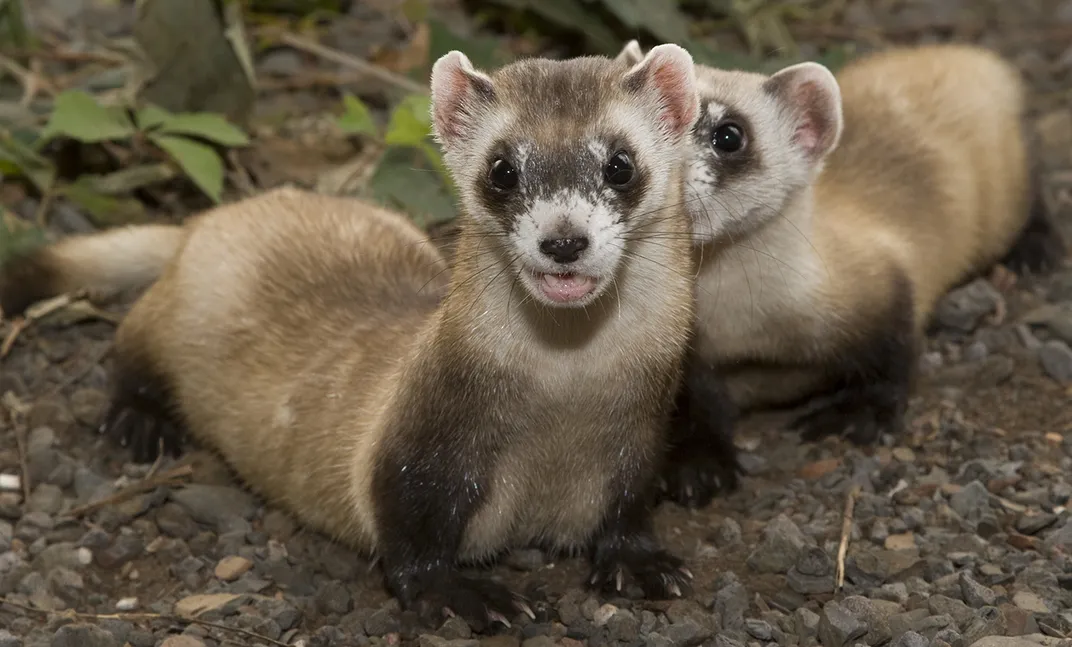
Black-Footed Ferret
North America’s only native ferret species may look cute to us, but to prairie dogs, they are deadly predators that sneak into their underground burrows. As prairie dog populations declined due to hunting, disease, and habitat loss, black-footed ferrets were left without their main sources of food and shelter. They disappeared from their grassland homes and were thought to be extinct until a small population was rediscovered in Wyoming in the 1980’s.
The last 18 black-footed ferrets were brought into captivity to establish a recovery program. The Smithsonian Conservation Biology Institute (SCBI) was one of the first to join, and since then, has helped bring 1,029 ferret kits into the world – 350 of which were sent on to join reintroduced colonies in the wild.
While black-footed ferrets are still critically endangered, and heavily reliant on human help, recovery and reintroduction programs are showing a lot of promise. Plus, scientists still have a few tricks to use – like cryopreserved genetic material stored at SCBI and the San Diego Frozen Zoo. Now, long-dead animals that were never part of the breeding program have artificially-inseminated offspring, and even a clone, to inject much-needed genetic diversity into the revived black-footed ferret population.
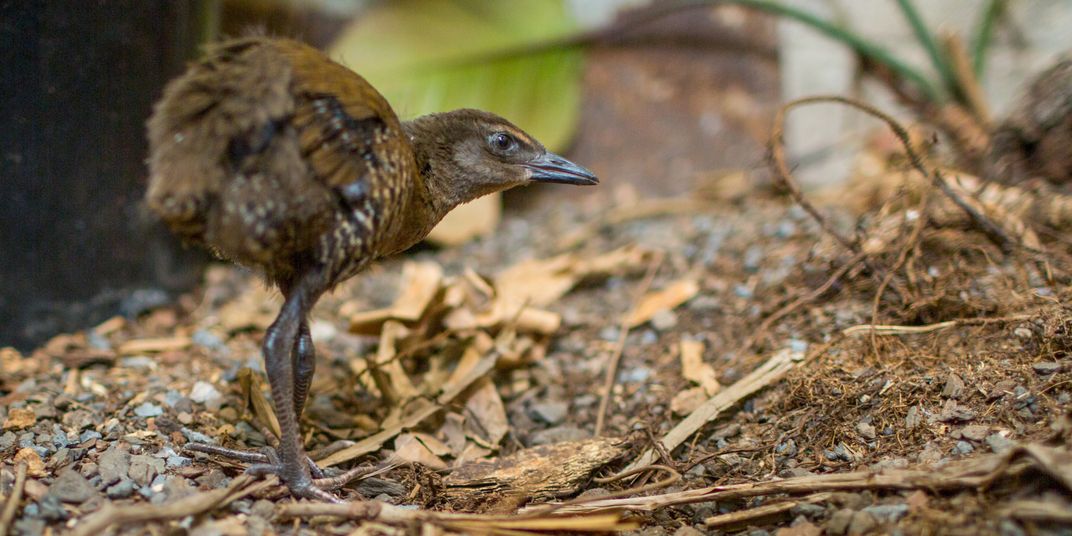
Guam Rail
Guam has been eerily quiet in the decades since the invasive brown tree snake took over. Most of the Pacific island’s native species weren’t prepared for the new predator – especially birds, which were key to keeping the forest healthy by spreading seeds and fertilizing growing plants. The Guam rail – a flightless bird known locally as the ko’ko’ – was so hard-hit that the species was declared extinct in the wild.
The last 17 Guam rails were captured to establish a captive breeding program, and SCBI was one of the facilities chosen to help out. Once a healthy population was built up, it was time to reintroduce some birds into the wild – though since Guam is still struggling with snakes, they were released onto nearby Rota and Cocos Islands instead. Today, over 200 Guam rails are filling their (kinda) natural habitats with their loud, screeching calls once more.
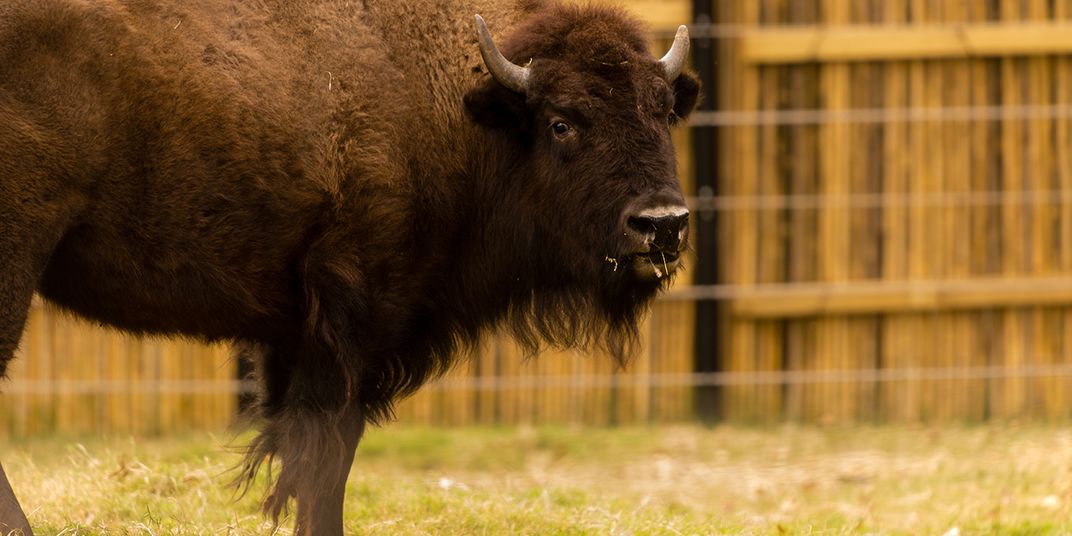
American Bison
Tens of millions of these hairy beasts once roamed across North America’s grasslands. Bison are a keystone species on the prairie, sustaining the rich biodiversity that surrounds them. In the 1800’s, though, they were caught up in a horror story – all but a few thousand were exterminated by settlers in an effort to disrupt the livelihoods of the Native people that depended on them.
In 1886, a Smithsonian expedition to collect bison specimens turned naturalist William Temple Hornaday from a simple taxidermist into an early conservationist. Shocked at how low the wild bison population had become, he joined the growing movement to stop the senseless slaughter of the species. The live bison exhibit he helped establish behind Smithsonian Castle laid the foundation for the National Zoo, which was a crucial part of captive breeding and reintroduction programs.
Today, thousands of bison have returned to their native habitats thanks to partnerships between Native Nations, universities, and conservation organizations. Though these herds are much smaller than before, they have great potential to help Native people reconnect with their cultural practices and ancestral foodways, as well as help prairie communities become more resilient to climate change.
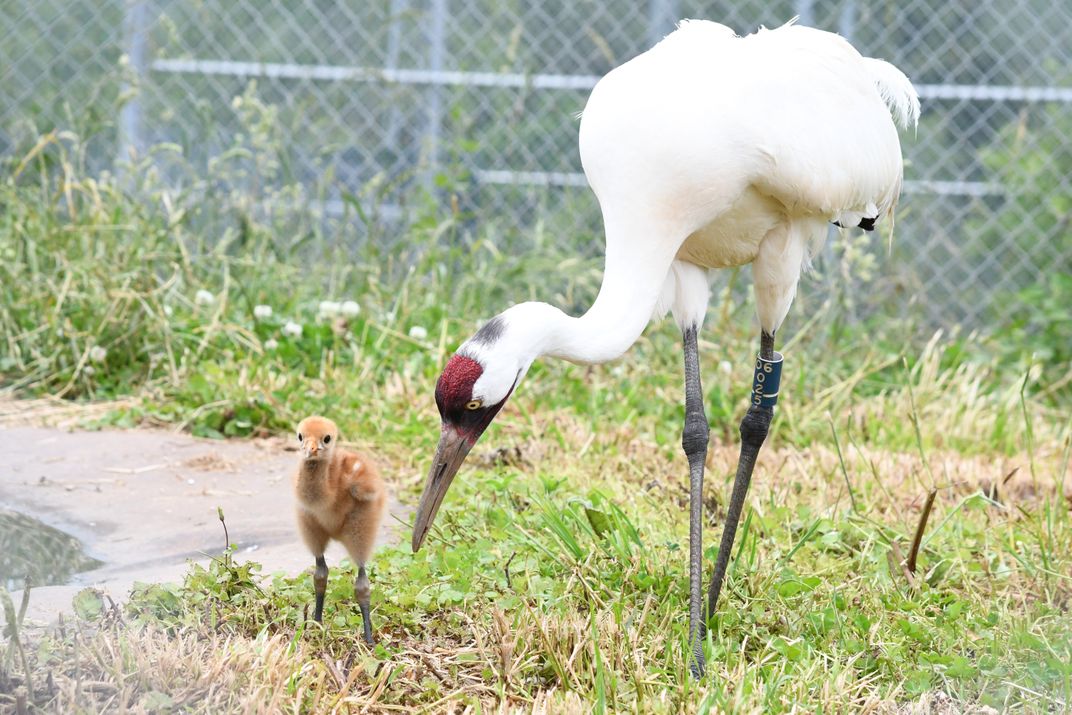
Whooping Crane
Dinosaurs may not be around anymore, but their avian descendants can still be pretty intimidating. Take the whooping crane for example: as North America’s tallest bird, it stands at 5 feet tall with a 7-foot wingspan. Their loud, whooping calls could once be heard in wetlands across North America as flocks undertook their 2,500-mile-long migrations, but by the 1940’s, there were less than two dozen individuals left due to habitat destruction.
The U.S. Fish and Wildlife Service and Canadian Wildlife Service established a breeding program with some of the last wild eggs, using novel yet effective tactics like dressing caretakers up like adult cranes to teach chicks survival skills, and even flying ultralight aircraft to lead young cranes on their first migrations. Today, approximately 700 whooping cranes are back in the wild, and more are on their way – in 2018, SCBI opened a new breeding facility, and the growing set of new chicks hatched there will be candidates for reintroduction too.
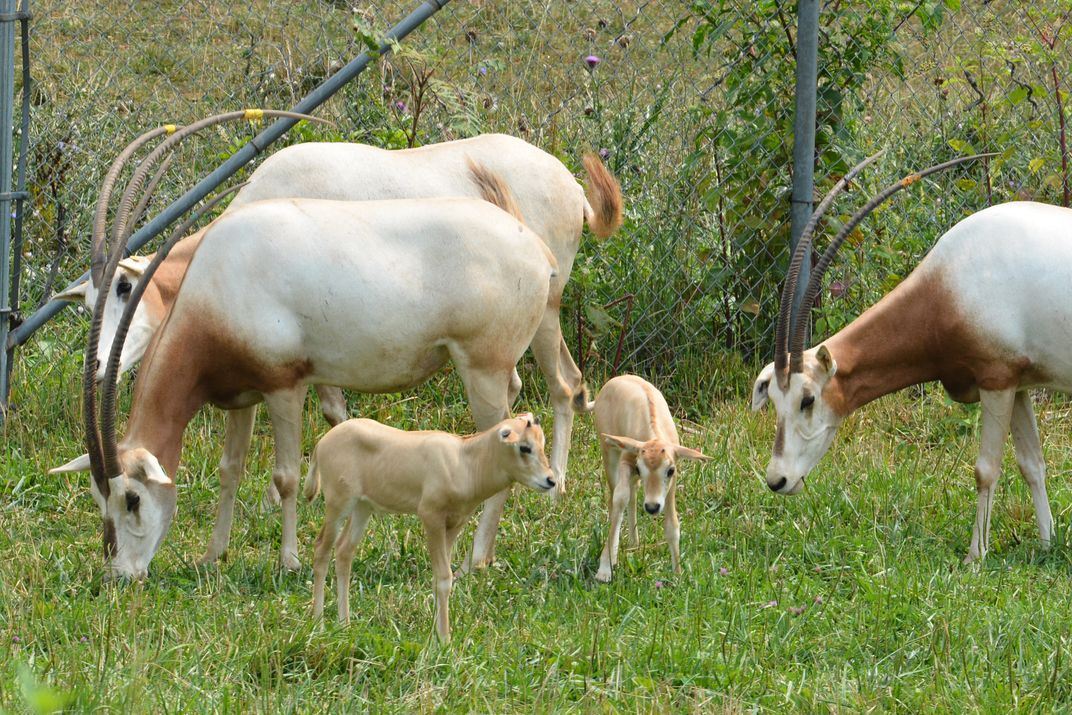
Scimitar-Horned Oryx
Some say that the scimitar-horned oryx was the inspiration for the mythical unicorn, but unless you’re looking at one from the side, you’ll notice that these desert antelope have two backwards-facing horns instead of one in the center of the forehead. This North African species was driven to extinction in the wild by overhunting and habitat degradation, but a few herds remained in captivity.
SCBI joined an international team dedicated to increasing those numbers, helping with developments like less-stressful assisted reproduction strategies. Following years of population growth, an international partnership set out to reintroduce scimitar-horned oryx to protected areas in Chad. 240 oryx are now thriving in the wild, their every move carefully monitored via innovative tracking devices.

